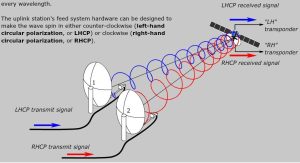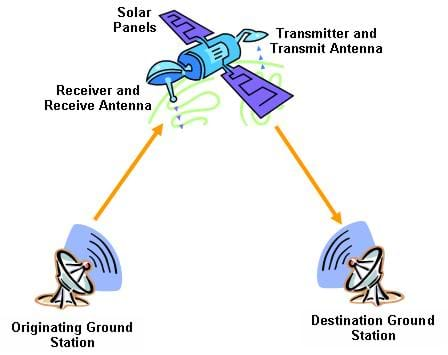The performance of wireless communication systems is heavily influenced by the channel conditions, which can be quite perplexing. The channel acts as a conduit for signals, but it’s highly susceptible to a variety of factors such as distance, obstacles, and interference. An even greater challenge arises when dealing with a fading channel where signal strength fluctuates due to multipath propagation or other causes.

To overcome these challenges, transmitter diversity techniques are employed in wireless communication systems to increase burstiness and improve overall system performance. Transmitter diversity involves using multiple antennas at the transmitter end to transmit several copies of the same signal simultaneously from different antennas. This technique allows for better reception at the receiver end despite one or more channels experiencing fades.
Additionally, spatial multiplexing can also be achieved with transmitter diversity techniques allowing several independent data streams to be sent over each antenna – an impressive feat indeed! However, space diversity – yet another technique used in wireless communications – leverages multiple receiving antennas spaced apart from each other instead. This approach reduces fading effects caused by obstructions such as buildings or trees that may cause destructive interference since signals may take different paths around them and arrive at varying times.
Overall then, space diversity provides an alternative path for these signals so they do not cancel out completely resulting in improved reliability and reduced error rates during wireless transmissions; something that would have been impossible without this innovative technology!
Understanding the Impact of Fading on Wireless Communication Systems
Contents
- 1 Understanding the Impact of Fading on Wireless Communication Systems
- 2 Leveraging Space Diversity Techniques to Improve System Performance
- 3 Overcoming the Problem of Interference Using Multiple Antenna Systems
- 4 The Importance of Frequency Diversity in Reducing Path Loss
- 5 Exploring the Benefits of MIMO and Spatial Multiplexing Technologies
- 6 How Transmit and Receive Diversity Increase Capacity and Reliability
- 7 Designing Wireless Systems to Minimize Shadowing and Other Propagation Effects
- 7.1 What mysterious forces govern the role of channel conditions in transmit and receive diversity?
- 7.2 How does fading bewilder wireless communication systems?
- 7.3 Can space diversity techniques unravel the mysteries behind improved system performance?
- 7.4 Is interference an insurmountable obstacle for multiple antenna systems or can they overcome it with their own arcane powers?
- 7.5 Does frequency diversity hold any magical properties capable of combating path loss?
- 7.6 Can MIMO or spatial multiplexing technologies cast spells on capacity and reliability improvement?
- 7.7 Is there anything miraculous about how transmit/receive diverse approaches enhance capacity & reliability?
- 7.8 What mystical design principles must be employed to quell shadowing and other propagation effects?
The perplexing nature of wireless communication systems is that they are highly susceptible to fading, resulting in a loss of signal quality and information. The cause behind this phenomenon is the multipath propagation effect, where signals take multiple paths to reach the receiver, causing interference between them. The sheer magnitude of this issue becomes more pronounced when signals travel over long distances or through obstacles such as buildings.

To combat the burstiness caused by this challenge, various techniques have been developed that use diversity methods to improve system performance. One such technique involves transmitter diversity that includes sending multiple copies of the same signal from different antennas at the transmitter end. To make sense of these diverse signals, a sophisticated algorithm takes into account their phase and amplitude differences before combining them at the receiver end.
Another approach is space diversity that uses an eclectic mix of multiple antennas at both ends of the channel (1+1 or 2+2). By having several channels available for transmission and reception simultaneously on one device or network infrastructure point we can mitigate some effects caused by fading on any one channel while enhancing reliability and capacity for wireless communication systems.
In conclusion, grasping how fading impacts wireless communication systems remains critical for designing reliable and efficient networks. Techniques like transmitter diversity and space diversity offer effective solutions to reduce signal degradation brought about by multipath propagation- paving way for improved experiences with wireless communicationsystems as technology continues advancing faster than ever imagined!
Leveraging Space Diversity Techniques to Improve System Performance
The use of space diversity in wireless communication systems is a perplexing technique that bewilders many. Its purpose? To mitigate the effects of fading – a phenomenon that occurs when signals encounter obstacles or interference, causing them to weaken or vanish into thin air. But how does it work? By employing multiple antennas at both the transmitter and receiver, space diversity creates a bursty stream of data that is more reliable and less susceptible to fade.
This redundancy also provides another benefit: redundant data streams. Each antenna receives slightly different versions of the same signal, so if one stream fades due to interference, another may still be available for use. This bursty approach helps ensure data can be reliably transmitted and received even in challenging environments where obstacles abound.
Moreover, space diversity techniques have an uncanny ability to mitigate shadowing and other propagation effects which can distort or weaken signals as they pass through buildings or other barriers. Multiple antennas placed at various angles capture signals from different directions resulting in improved overall system performance without additional infrastructure costs – now there’s something worth pondering over!
Overcoming the Problem of Interference Using Multiple Antenna Systems
The enigmatic world of wireless communication engineering has been shaken up by the rise of multiple antenna systems, which have managed to solve the long-standing issue of interference. These systems utilize a complex combination of spatial diversity, frequency diversity, and redundancy techniques to deliver an unrivaled signal quality and increase network capacity. However, their performance is heavily reliant on the condition of the channel they operate in.
One such technique that has taken center stage is Multiple-Input Multiple-Output (MIMO), where numerous antennas are installed at both ends of the communication path. MIMO technology has revolutionized system performance by allowing for multiple data streams to be transmitted simultaneously over one radio channel. In addition, frequency diversity helps mitigate packet loss caused by fading due to multipath propagation.
Redundancy paths also play a pivotal role in improving reliability and throughput in these intricate systems. A redundant path provides an alternate route for packets if one becomes congested or unavailable due to interference or other factors. This unique approach not only ensures more reliable transmission but also reduces latency as packets are routed through different paths simultaneously – truly mind-boggling! To sum it all up, multiple antenna systems offer remarkable benefits when it comes to enhancing wireless network performance under challenging conditions like interference-prone environments with high levels of noise and fading effects on signals propagating along a given path.
The Importance of Frequency Diversity in Reducing Path Loss
Path loss is a gnarly issue in wireless communication systems that leaves signals weak and performance poorer than a penny stock. Luckily, frequency diversity techniques can handle this challenge with ease.
Frequency diversity involves transmitting the same data across multiple frequencies at once or in sequence to make better use of available bandwidth and minimize interference from adjacent signals. This technique also helps mitigate the effects of multipath fading since different frequencies have varying propagation characteristics.
In environments where noise levels are deafening or signal-to-noise ratio (SNR) is low, frequency diversity can help increase capacity and reliability by improving spectral efficiency. Pairing it with spatial diversity techniques like MIMO takes this up another notch – allowing for simultaneous transmission over several antennas while avoiding interference between them.
Overall, incorporating frequency diversity into wireless system design makes light work of tough scenarios such as shadowing and fading. Thus enabling high-quality transmissions even when traditional single-frequency approaches struggle to achieve reliable connectivity.
Exploring the Benefits of MIMO and Spatial Multiplexing Technologies
MIMO, an acronym for Multiple Input Multiple Output technology, is an absolute game-changer in wireless communication systems. By harnessing the power of different antennas at both ends of a signal transmission, MIMO dramatically enhances signal quality while reducing errors caused by interference, noise and fading. With higher data rates and improved network capacity, MIMO is nothing short of remarkable.
Spatial multiplexing takes things to another level altogether by sending multiple data streams simultaneously over the same frequency band using various antenna configurations – a feat that defies convention! This technique allows for increased throughput levels without requiring additional bandwidth or power consumption. But what’s truly mind-boggling is how digital signal processing algorithms separate each stream at the receiving end!
To make all this magic happen requires analog-to-digital converters to convert signals from analog to digital form before transmission over wires or airwaves. These converters enable high-speed movement of signals between devices while maintaining their accuracy and integrity during transfer – quite perplexing stuff!
In summary, if you want your wireless communication systems’ performance levels significantly enhanced with better reliability, increased network capacity and reduced interference effects while enjoying higher data rates without extra bandwidth requirements or power consumption costs through digital signal processing algorithms like ADCs that enable accurate conversion between analog and digital forms when sending wirelessly via various mediums such as radio waves – then harnessing MIMO and spatial multiplexing technologies are must-haves!
How Transmit and Receive Diversity Increase Capacity and Reliability
The intricacies of wireless communication systems are vast and complex. Among the many factors that contribute to their success, transmit and receive diversity stand out as crucial components that can increase both capacity and reliability. However, with the advent of 5G technology, it has become increasingly apparent that simply using multiple output antennas may not be enough to achieve optimal data rates.
In fact, the problem of interference looms large over such systems like a dark cloud on an otherwise clear day. But fear not! There is still hope for those who seek to overcome this obstacle. Enter selection combining – a technique that can select the best signal from among several received signals in order to improve system performance by reducing fading caused by shadow effects or other propagation losses.
But wait, there’s more! Transmit and receive diversity also offer individual benefits by improving signal strength across networks through space diversity techniques designed to minimize shadowing and other propagation effects. Yes, these technologies may come at a cost but they are available today and offer significant improvements without requiring additional infrastructure investments. So let us embrace these perplexing yet bursty features of wireless communication systems with open arms!
Designing Wireless Systems to Minimize Shadowing and Other Propagation Effects
The perplexing challenge of minimizing the impact of shadowing and other propagation effects in wireless systems is a daunting task. Despite their persistence, careful system design can help mitigate these phenomena. One approach involves implementing a structure that enables multiple independent signal paths between transmitter and receiver, such as through the use of multiple antennas or spatial multiplexing.
By harnessing these techniques, it becomes possible to surpass the limitations imposed by single input, single output (SISO) systems. SISO technology is hampered by its lack of diversity in reception capabilities – if one path experiences attenuation due to factors like shadowing, then transmission may be lost entirely. However, with MIMO or spatial multiplexing technologies at play providing several paths for signals to travel on successfully.
Widely used among modern wireless communication systems,MIMO holds immense promise over traditional SISO approaches.By leveraging at least two antennas on both ends of the link along with innovative space-time coding techniques,it’s not only possible but probable to elevate reliability while boosting capacity significantly.In addition,MIMO tech has been shown an effective tool against interference from similar frequency sources,such as nearby devices.This makes it indispensable when designing robust wireless networks capable enough to provide consistent performance even under challenging circumstances.
What mysterious forces govern the role of channel conditions in transmit and receive diversity?
The enigmatic influence of channel conditions is pivotal to the performance of wireless systems. Transmit and receive diversity techniques are shrouded in an aura of intrigue, used to assuage the inscrutable effects of fading, interference, and shadowing that lurk within these channels.
How does fading bewilder wireless communication systems?
Fading’s confounding nature stems from its ability to cause signal attenuation and distortion as it traverses through various paths. It leaves a trail of weakened signals and increased errors that bedevil wireless communication systems.
Can space diversity techniques unravel the mysteries behind improved system performance?
Space diversity techniques are a cryptic solution able to unlock better system performance by reducing the impact of fading and interference. Multiple antennas emit signals into this baffling arena, increasing chances for capturing higher-quality transmissions.
Is interference an insurmountable obstacle for multiple antenna systems or can they overcome it with their own arcane powers?
Multiple antenna systems possess otherworldly abilities such as interference cancellation mechanisms allowing them surmount this vexing problem. These technological incantations cancel out interfering signals while enhancing received signal-to-noise ratios.
Does frequency diversity hold any magical properties capable of combating path loss?
Frequency diversity’s mystical prowess lies in its utilization across numerous bands for data transmission which lessens path loss impacts. This sorcery spreads transmissions over different frequencies granting greater probabilities for receiving quality signals.
Can MIMO or spatial multiplexing technologies cast spells on capacity and reliability improvement?
MIMO & spatial multiplexing technologies wielded together conjure up superior capacities & reliable connections using multi-antennas resulting in augmented data rates with fewer mistakes.
Is there anything miraculous about how transmit/receive diverse approaches enhance capacity & reliability?
The divine power of transmit/receive diversity lies in its ability to thwart channel impairments like fading and interference. This technique incorporates multiple antennas empowering the system with greater opportunity for capturing high-quality signals.
What mystical design principles must be employed to quell shadowing and other propagation effects?
Designers imbue wireless systems with mystic properties that reduce shadowing & other propagation effects using transmit/receive diversity techniques, space diversity techniques, frequency diversity, and interference cancellation. These sorceries mitigate channel impairments elevating system performance.


